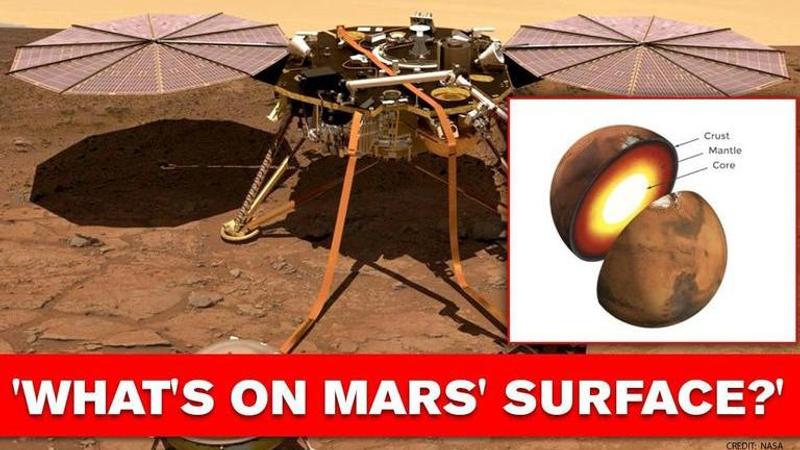Published 18:46 IST, August 11th 2020
NASA InSight lander uncovers Mars' surface details in seismograph data
NASA Voyager 2 discovered a gigantic cloud of debris, suspected to be remnants of the destroyed moons and one of two new ring arcs, or partial rings.

NASA’s InSight lander that started surface operations at Elysium Planitia on Mars has revealed the Red planet’s surface details in the seismograph data that it collected about 10 weeks after landing. Short for Interior Exploration using Seismic Investigations, the Geodesy and Heat Transport captured intricate details and measurements of three subsurface boundaries from the crust to the core of the celestial body, observed by Rice University seismologists, a statement confirmed.
Studying Mars' interior structure answered some of the key questions about the early formation of rocky planets in our inner solar system, Mercury, Venus, Earth, and Mars more than 4 billion years ago, as well as rocky exoplanets. InSight also measured the tectonic activity and meteorite impacts on the Red planet. Using the cutting edge instruments, InSight delved deep beneath the surface and captured the fingerprints of the processes that formed the terrestrial planets. According to NASA's press release, It achieved this by measuring the planet's "vital signs", which is its "pulse" (seismology), "temperature" (heat flow), and "reflexes" (precision tracking).
It flew about 2,980 miles (4,800 kilometers) over the cloud tops of the giant planet, the closest of its four flybys. It was the first human-made object to fly by the planet. Its 10 instruments were still in working order at the time, NASA explained in the statement.
Ultimately it may help us understand planetary formation, said Alan Levander, co-author of a study published this week in Geophysical Research Letters
As per Levander, the thickness of Mars’ crust and the depth of its core have been calculated with a number of models, Levander said the InSight data allowed for the first direct measurements, which can be used to check models and ultimately to improve them. “In the absence of plate tectonics on Mars, its early history is mostly preserved compared with Earth,” said study co-author Sizhuang Deng, a Rice graduate student. “The depth estimates of Martian seismic boundaries can provide indications to better understand its past as well as the formation and evolution of terrestrial planets in general," he added. Mars lander touched down on the red planet in November 2018. Mars’ interior and the processes that formed it were key goals of the machine.
InSight measured Seismometers vibrations
Further, the lander measured the Seismometers vibrations from seismic waves, which are the circular ripples that mark the spot where a pebble disturbed the surface of a pond. According to NASA's scientists, the seismic waves flow through planets, marking the location and size of disturbances like meteor strikes or earthquakes. “The traditional way to investigate structures beneath Earth is to analyze earthquake signals using dense networks of seismic stations,” said Deng.
“Mars is much less tectonically active, which means it will have far fewer marsquake events compared with Earth. Moreover, with only one seismic station on Mars, we cannot employ methods that rely on seismic networks.” The inSight found the mantle on Mars' surface where magnesium iron silicates undergo a geochemical change. Above the zone, the elements form a mineral called olivine, and beneath it, heat and pressure compress them into a new mineral called wadsleyite. Known as the olivine-wadsleyite transition, this zone was found 690-727 miles (1,110-1,170 kilometers) beneath InSight, as per the report.
[NASA's lander captured region on Mars known as Cerberus Fossae. Credit: NASA]
[NASA's lander InSight studying subsurface of the Mars. Credit: NASA]
Updated 18:46 IST, August 11th 2020





